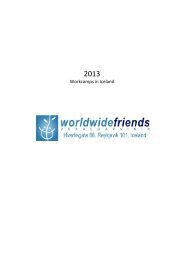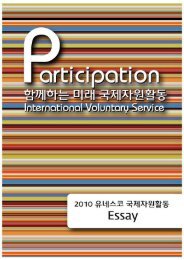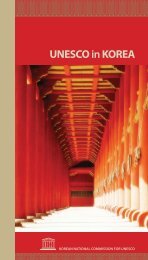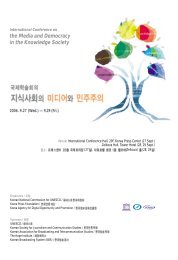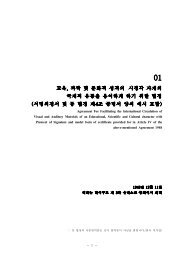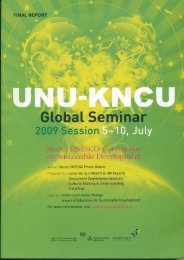íëìë³´ë2012문íì ë°ì ë¼ì´ëí ì´ë¸.pdf - ì ë¤ì¤ì½íêµììí
íëìë³´ë2012문íì ë°ì ë¼ì´ëí ì´ë¸.pdf - ì ë¤ì¤ì½íêµììí
íëìë³´ë2012문íì ë°ì ë¼ì´ëí ì´ë¸.pdf - ì ë¤ì¤ì½íêµììí
Create successful ePaper yourself
Turn your PDF publications into a flip-book with our unique Google optimized e-Paper software.
Swidler (2007) also found that governments and NGOs were more effective when they<br />
mobilized solidarity and the social meaning structure within local communities. Field studies<br />
in Uganda and Botswana came to the conclusion that local governments and organizations<br />
have more access to the poor than international voluntary organizations. This means that<br />
poverty alleviation can be better achieved when the focus of assistance is on empowering the<br />
poor so that they can figure out their own ways to escape from poverty.<br />
One example of relief efforts that started on the basis of cultural diversity is the Seed<br />
Project of Korea Advanced Institute of Science and Technology (KAIST). It aims to remodel<br />
towns in developing countries for the purpose of increasing their quality of life. Local<br />
residents are consulted in the creative process and local conditions are taken into<br />
consideration. In 2011, there were many slate houses built by international nonprofit<br />
organizations in the Masai towns of Kenya. The Seed Project started when KAIST realized<br />
that the Masai people slept on houses made from dung while these houses were abandoned.<br />
Such attempts intended to aid poor countries, i.e. through music, dance, and good houses, are<br />
the results of a westernized way of thinking. Indigenous people, unfamiliar with the western<br />
culture, found them inconvenient and rejected them because they did not give them cognitive<br />
peace. Therefore, solutions are needed that take into account the understanding of the<br />
environment, culture, customs, and the educational levels of regions concerned.<br />
3) Examples of Cultural Strategies for Overcoming Poverty<br />
The tradition and indigenous culture held by communities play an important role in<br />
regional development as they are the only resources they have. Tradition is passed down from<br />
generation to generation among community members, shaping livelihood portfolios of<br />
regions in the form of tangible artworks or intangible performances. This in turn increases the<br />
opportunities for members to pursue self-development and sustainable livelihoods. The<br />
importance of crafts in livelihoods can be verified in a number of actual cases. For instance,<br />
the production of crafts in Colombia amounts to $400 million each year, including $40<br />
million in exports. Workers in this industry earn annual incomes ranging from $140 to $510.<br />
300,000 Tunisian workers produce 3.8% of the annual GDP with each household earning<br />
$2,400 a year. As seen in these cases, crafts are gaining attention as a major means of<br />
generating income through trade and enhancing capabilities (UNESCO, 2010).<br />
Kandi in Sri Lanka is another good example of establishing a sustainable livelihood model<br />
through crafts. Since the late 18th century, Kandi has served a central role in culture with




